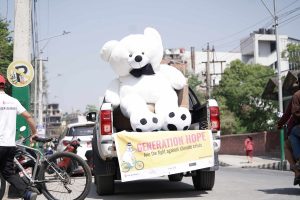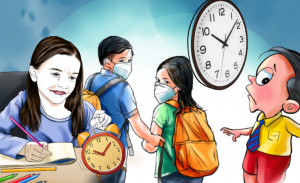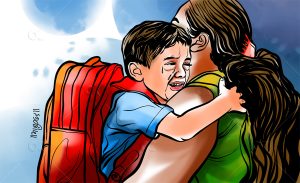
Different people and organisations have been assessing the impacts of the Covid-19 crisis in Nepal differently. These evaluations, however, are focused on economic and health sectors only. However, there are many sectors that are affected. Among other problems, the current crisis is likely to result in an increase in the number of street children.
Whenever crises such as insurgencies, wars, disasters, epidemics, and pandemics happened in the past, records show they resulted in a rise in the number of homeless children. This age group is highly vulnerable to changes brought by the crises. Though the lockdown has been relaxed now, children are still out of school as formal classes are not starting anytime soon. Hence, the schoolchildren are developing the habit of procrastinating and enjoying their free time with no productive work. Child development and their mental health have been ignored in the government plans and strategies to fight against the crisis. Due to this, it is easy to assume that the children are most likely to drop out or they risk not getting proper guidance because of shifting focus towards freedom. In such situations, some may leave home and end onto the streets once the Covid-19 crisis will be over.
The chance of an increase in the number of street children after the Covid-19 crisis can be analysed by considering three particular pictures of reality.

First, there is a large number of families in Nepal who rely on daily wages or other unskilled labour activities for their living. Currently, their economic activities are halted, and the lack of alternative job opportunities is ultimately pushing these families towards another family crisis. As a result, there can also be disputes and family violence besides the financial crisis. Such developments directly affect children’s psyche and their development through different routes. Various studies in the past have proved that family violence and disputes are the major factors pushing children towards street life across the globe. The Covid-19 pandemic, likewise, can lead to frustration, stress and tension, and these can probably result in children leaving homes in search of a better life.

Secondly, shutting down the entire education sector for months might bring a big impact on children’s development in the near future. Parents in rural areas and urban poor communities have no other option than a school for children’s education and overall development, but we cannot keep an eye away from some private schools, which are conducting online classes for their students. Online classes have operated only in core urban areas, even excluding children from poor urban communities. If children remain out of school for a long time, a long gap in formal education will surely demotivate them to get back to the track of regular schooling. This is not conditional, but already a reality as it has been already three months since the schools conducted their last classes. As a result, the school dropout rate is certain to increase.

Lastly, as we can see people in a large number of people including those who do not often visit their villages are getting back home, during this lockdown. These returnees from urban communities are most likely to expose fake charms of urban life like wearing fancy dresses, using gadgets, spending money, and try to expose flamboyant lifestyles. Such behaviours can lure children living in a rural community into developing their desire for adopting similar lifestyles. Adults around children are not careful about protecting them from such fakes. However, their dream lifestyle will have to face a reality check later if they depart from their families for any reason. Without proper guidance and counselling, there will be a limited chance of returning and starting school life again, which might lead them to adopt street life.
The government is preparing to declare the country a ‘street children-free zone’. Some of the actions put forward by the government for children are highly appreciable, for instance: the formation of National Child Right Council and the operation of toll-free number104 for the rescue of street children and their management. Despite all these positive notes, it is high time the government focused on prevention programmes, simultaneously with rescue programmes, so as to minimise children’s number living on the streets.
Currently, local governments are actively participating in child development activities. It is positive as the local leaders know the grassroots of their community. There is a need for a programme specially focused on ‘community for children’ which helps in preventing them from coming to the streets. The local units should collaborate with schools and local clubs to launch such programmes. Most importantly, parents should be aware of such issues before it is too late.
Koirala works for Child Watabaran Centre Nepal, a child rights NGO.
























